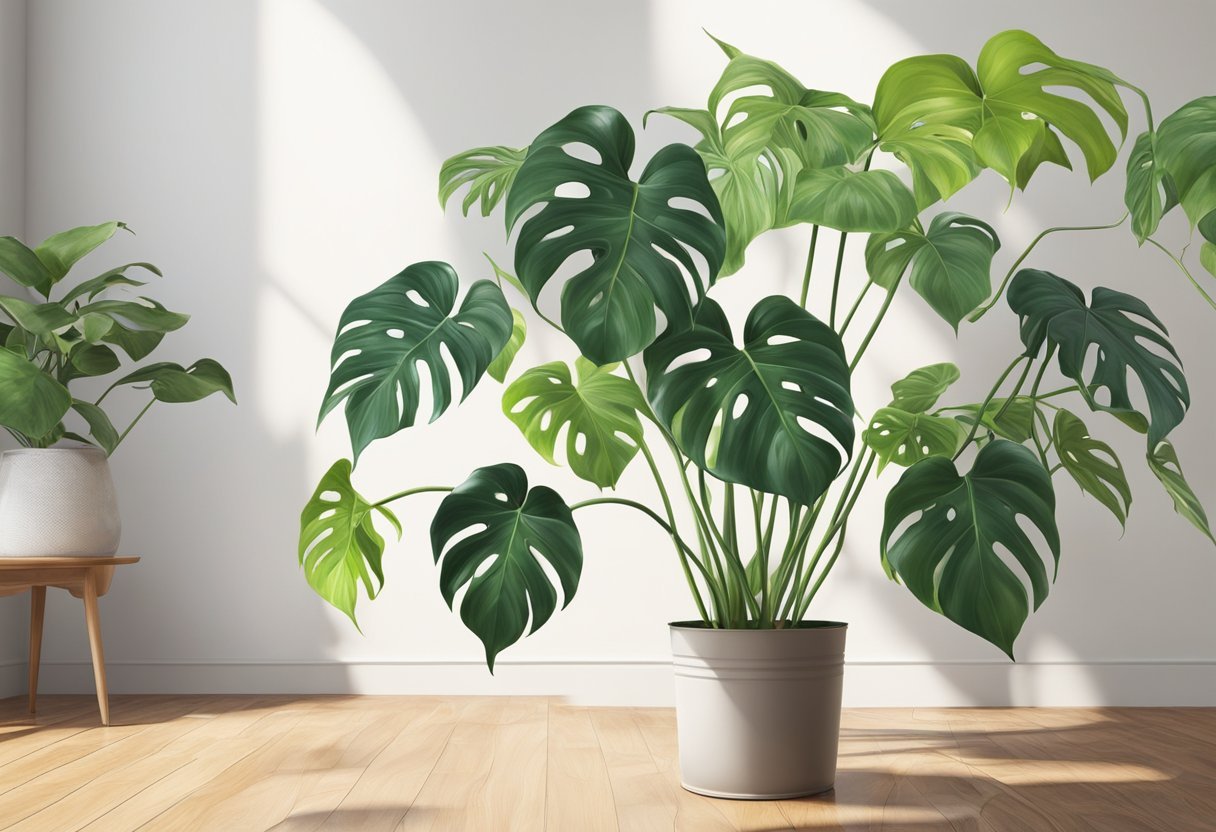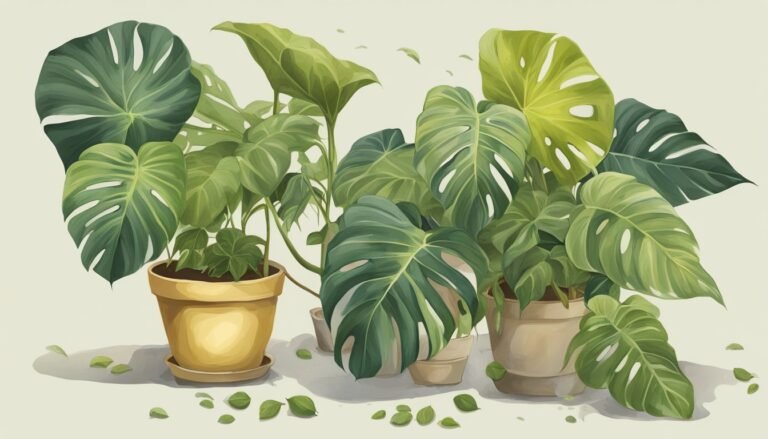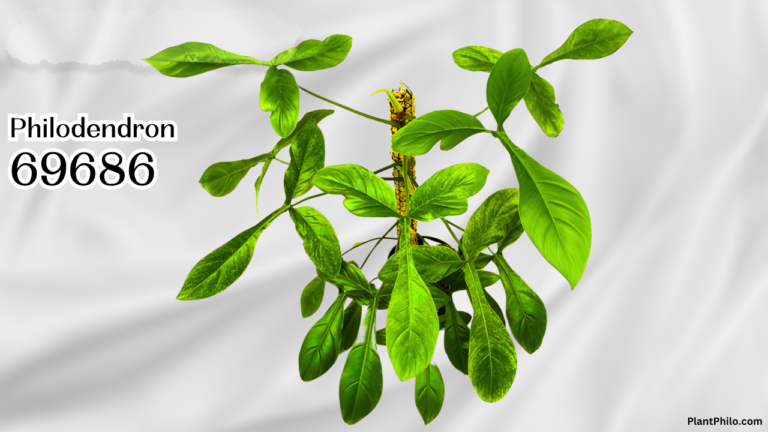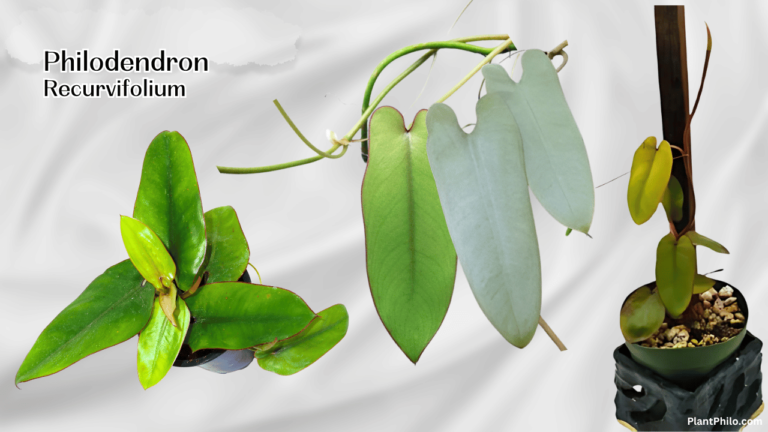Philodendron Growing Guide: Tips for Thriving Houseplants
Even if you’ve killed every plant you’ve ever owned, philodendrons will forgive you. They have over 480 unique species, each with its own personality and care preferences. Over the last few years Philodendrons have become not only the Instagram stars of the plant world but also hard to kill..
Whether you’re an experienced green thumb or new to the world of houseplants, growing a philodendron can add a touch of the tropics to your indoor space. With their lush foliage and easy-going nature, these plants have become a popular choice for indoor gardeners.
Philodendrons are forgiving to novice plant owners and respond well to correct care, making them a rewarding choice for almost anyone. From striking climbing varieties to stout, bushy types, there’s a philodendron to fit any room’s aesthetic.
This is due to the presence of calcium oxalate crystals in the plant’s sap and leaves. These crystals can cause irritation and swelling of the mouth, throat, and digestive tract. Symptoms of philodendron poisoning in humans and pets can include:
- Oral irritation, pain, and swelling
- Difficulty swallowing or breathing
- Excessive drooling
- Vomiting
- Diarrhea
| Feature | Description |
| Origin | Tropical America and the West Indies |
| Family | Araceae |
| Types | Climbing, self-heading, creeping, shingling |
| Growth Habit | Vining, upright, spreading, clinging |
| Foliage | Large, glossy leaves; various shapes, colors (green, red, purple, variegated) |
| Light | Bright, indirect light |
| Water | Regular watering, allow soil to dry out slightly between waterings |
| Temperature | Ideal: 65-85°F (18-29°C). Avoid temperatures below 55°F (13°C). |
| Humidity | Prefers high humidity (60% or higher), but can tolerate average household humidity (40-50%). Misting or using a pebble tray can help increase humidity. |
| Soil | Well-draining potting mix. A mixture of peat moss, perlite, and vermicast is a good option. |
| pH Level | Slightly acidic to neutral (5.5 – 7.0) |
| Fertilizer | Balanced liquid fertilizer monthly during the growing season. Dilute to half strength. |
| Common Pests | Spider mites, mealybugs, scale |
| Toxicity | Toxic to pets and humans if ingested |
| Air Purifying | Removes toxins like formaldehyde and benzene from the air |
| Propagation | Stem cuttings in water or soil |
In rare cases, severe reactions can occur, especially in young children or small pets. If you suspect that you or your pet has ingested Philodendron, it’s important to seek medical attention immediately.
If you have pets or young children, it’s best to keep philodendrons out of reach, or consider choosing non-toxic houseplants as an alternative.
Key Takeaways
- Philodendrons are versatile and visually appealing plants ideal for indoor gardening.
- They require simple care routines, suitable for beginners and expert gardeners alike.
- Various types of philodendrons offer options to fit any interior design theme.
Understanding Philodendrons
Philodendrons are versatile and come in different forms, making them a favorite among houseplant enthusiasts. Whether you love bushy plants or prefer the elegance of a trailing vine, there’s a philodendron out there for you.
Natural Habitat
Philodendrons hail from the rainforests of tropical South America and the West Indies. In their natural habitat, they thrive under the canopy of the forest, receiving dappled sunlight and enjoying the high humidity. When you bring a philodendron into your home, replicating this environment—think indirect light and a bit of moisture—can help it flourish.
Species Variety
Philodendrons are a large genus of flowering plants in the family Araceae. There are over 480 species of philodendrons, making them one of the largest genera of flowering plants.
For example, the Philodendron hederaceum, often known as the heartleaf philodendron, boasts heart-shaped leaves and loves to climb. Varieties such as the Philodendron bipinnatifidum, or tree philodendron, grow large and have deeply lobed leaves, making a statement wherever they are placed.
Types of Philodendron
Your philodendron can fall into one of two main categories:
- Climbing Philodendrons (Vining): These philodendrons are known for their long, trailing stems that climb or vine using aerial roots. They are often used in hanging baskets or trained to climb up trellises or moss poles.
Examples: Heartleaf Philodendron, Philodendron Brasil, Philodendron Micans.
- Self-Heading Philodendrons (Non-Vining): These philodendrons grow upright and don’t require support. They typically have larger leaves and a more compact growth habit than climbing philodendrons. They are well-suited for pots or as statement plants on the floor.
Examples: Philodendron Xanadu, Philodendron Birkin, Philodendron Prince of Orange.
- Creeping Philodendrons: These philodendrons have a spreading or creeping growth habit. They often have smaller leaves and are well-suited for terrariums or as ground cover in larger pots.
Examples: Philodendron Gloriosum, Philodendron Pastazanum.
- Shingling Philodendrons (Appressed Climbing): These philodendrons have a unique growth habit where they cling tightly to surfaces like tree trunks or walls using their aerial roots. Their leaves often overlap like shingles, hence the name.
Examples: Philodendron verrucosum, Philodendron squamiferum.
This type of Philodendron is often sought after for its interesting growth habit and unique foliage. However, they can be a bit more challenging to care for as they require specific conditions to thrive.
Getting Started
Embarking on the journey of growing philodendrons can be exciting and rewarding. You’ll need the right plant and a handful of essential items to start your indoor jungle.
Choosing Your Philodendron
When picking out a new Philodendron for your home, consider the variety that suits your space and style. If you’re a beginner with Philodendron plants, I would suggest you start with the hardy ones first. The heartleaf philodendron (Philodendron scandens) is a popular choice due to its fast growth and easy care.
For those looking for a more exotic look, the velvety leaves of Philodendron melanochrysum may be alluring. Remember, each type has its own light and space requirements, so match your choice to your living environment.
Essential Supplies
Here’s what you’ll need to get your Philodendron started:
- A pot with drainage holes: This prevents water from pooling at the bottom and causing root rot.
- Potting mix: A well-draining, peat-based mix is ideal. Look for one that’s formulated for aroids or indoor plants.
- Watering can: Choose one that allows you to water gently and evenly.
- A place with indirect light: Your Philodendron will thrive in bright, indirect sunlight.
- Fertilizer: A balanced, water-soluble fertilizer will keep your plant healthy, especially during the growing season.
How to Plant Your Philodendron
Starting your Philodendron off right begins with proper planting. Pay attention to the soil conditions, choose the right pot, and apply a solid planting technique to set the stage for healthy growth.
Soil Requirements
Philodendrons thrive in rich, well-draining soil. Aim for a mix high in organic matter that can retain some moisture without becoming waterlogged. Use a peat-based potting mix or create your own blend with peat, perlite, and vermiculite to ensure it gets the foundation it deserves.
Pot Selection
Select a pot that complements your plant’s size and has adequate drainage holes. Terracotta or ceramic pots are great choices; they not only look good but also support soil moisture regulation. Remember, the pot should be just slightly larger than the root ball to avoid excess moisture retention.
Planting Technique
Begin by watering the soil in the pot to make root removal smoother. If the roots are tightly packed, gently tease them out to encourage spreading. Plant at the same soil height as before to avoid stem rot. Firm the soil gently around the roots, but don’t compress it—it needs to be loose enough to allow for water and airflow.
Watering Regimen
Getting the watering right for your Philodendron is crucial for its growth. You’ll want to aim for a balance—enough to keep the soil moist but not so much that it’s waterlogged.
Watering Frequency
Your Philodendron loves consistency, so water when the top few inches of soil are dry. Usually, this means every 1-2 weeks, but this can vary based on factors like temperature and humidity.
During the growing season—spring and summer—you’ll water more frequently, while in fall and winter, less so. Always check the soil’s moisture rather than water it on a strict schedule.
Signs of Overwatering
Be vigilant for telltale signs of too much water. Yellow leaves often signal that you’ve been too generous with water, while wilted, limp leaves can point to root rot, a serious condition caused by overwatering. Adjust your watering schedule if you notice these symptoms.
Proper Drainage
To prevent water from pooling at the bottom, make sure your pot has good drainage holes. When you water, do so thoroughly, allowing excess water to escape. This helps to avoid salt build-up in the soil. If water sits in the saucer underneath, empty it to keep roots from sitting in water.
Light, Temperature and Humidity
When you’re setting up the perfect spot for your Philodendron, getting the light, temperature, and humidity right is key for a happy plant.
Light Needs
Philodendrons prefer 6 to 8 hours of medium to bright, indirect light every day. Direct sunlight can lead to drooping and wilt, so keep your Philodendron in a place where it can enjoy filtered light, like near a window with sheer curtains. For more specific details on how to best position your plant, check out the guide on Philodendron Light Needs.
Temperature Considerations
Your Philodendron will thrive in temperatures that range from 65-80°F (18-27°C). Keep these plants away from drafts, outdoor breezes, and air conditioning vents that could expose them to colder temperatures, especially during the winter.
To ensure your plant’s ambiance is cozy, the care guide on Bloomscape provides an in-depth look into temperature preferences for Philodendrons.
Humidity Maintenance
Philodendrons, as tropical plants, thrive in high-humidity environments. Ideally, they prefer humidity levels of 60% or higher, mimicking their natural rainforest habitats. However, they are adaptable and can tolerate average household humidity levels of 40-50%.
To raise the humidity, you can mist the leaves regularly, place a humidifier nearby, or make a stone tray by filling a tray with rocks and water and placing the plant pot on top (ensuring the pot doesn’t touch the water directly). Grouping plants together can even form a microclimate of enriched humidity.
pH Level
Philodendrons thrive in slightly acidic to neutral soil, ideally with a pH level between 5.5 and 7.0. While they can tolerate a slightly wider range, maintaining this ideal pH ensures optimal nutrient uptake for healthy growth.
If the soil becomes too alkaline, philodendrons may struggle to absorb essential nutrients like iron, leading to yellowing leaves. Conversely, overly acidic soil can hinder the uptake of other vital nutrients.
You can easily test your soil’s pH using a simple kit from a garden center. Modifying the soil with lime to elevate the pH or sulfur to reduce it is possible if modifications are necessary.
Philodendron Nutrition
Good nutrition is vital for your Philodendron to maintain its lush, green leaves and steady growth. The key to this is knowing when to fertilize and what type of fertilizer to use.
Types of Fertilizers
When it comes to choosing a fertilizer for your Philodendron, you have several options to choose from:
- Liquid fertilizers are easy to use and can be applied while you water.
- Granular fertilizers release nutrients slowly over time but require a bit more effort to apply.
- Organic options like fish emulsion or compost can be less concentrated but are great for enriching the soil overall.
Make sure to select a product that has a balanced ratio of nitrogen (N), phosphorus (P), and potassium (K). A ratio of 20:20:20 of NPK ensures that your Philodendron gets the essential nutrients it needs.
Other than that, micronutrients like boron (B), chloride (Cl), copper (Cu), iron (Fe), manganese (Mn), molybdenum (Mo), nickel (Ni) and zinc (Zn) these are also needed for making your Philodendron strong enough to process the NPK that you have provided. So, next time when you go shopping for fertilizers for your Philodendron, look for these nutrients on the product.
Fertilizing Schedule
Philodendrons are not heavy feeders, but they do appreciate a regular feeding schedule. Typically, you should fertilize your Philodendron every 4-6 weeks during the growing season, which is spring and summer.
In fall and winter, you can reduce this to once every 6-8 weeks since the plant’s growth slows down. It’s important to follow this routine because the right amount of nutrients will support the health and vigor of the plant, as mentioned in the integral role of fertilization.
Growth and Pruning
Managing your Philodendron’s growth and ensuring health requires periodic pruning and understanding when it’s time for a larger pot.
Pruning Methods
To keep your Philodendron looking its best, you should prune off any unwanted vines using a pair of clean, sharp pruning shears. Snip the vine where it connects to the main stem for a clean cut.
Remove leaves that are damaged or discolored to encourage new growth. It’s also beneficial to cut back longer vines to encourage a bushier look and prevent leggy growth.
Promoting Healthy Growth
Foster a healthy Philodendron by pruning in the spring or fall for the best results. It’s important to ensure your pruning tools are clean to prevent the spread of disease. After trimming, avoid direct sunlight for about a week, and consider using a balanced liquid fertilizer to support the plant.
Repotting Time of Your Philodendrons
Your Philodendron will indicate it’s time to repot when you notice roots growing through the drainage holes or the growth seems to have stalled. Generally, repotting every couple of years in a slightly larger pot with fresh soil is a good practice to keep your Philodendron thriving.
Pest and Disease Management
When growing your Philodendron, keeping an eye out for unwanted visitors and potential diseases is crucial.
Your plant will thrive with the right preventive measures and timely responses to issues.
Common Pests
Your Philodendron might attract a few unwelcome pests. These include:
- Aphids: Tiny bugs that can cause yellowing leaves. Rid your plant of these by spraying with a soapy water solution.
- Mealybugs: Look for white, cottony masses on the stems or undersides of leaves. Use alcohol on a cotton swab to dab them away.
- Spider Mites: Cause fine webbing and yellowed leaves. Increase humidity around the plant and spray with a miticide if necessary.
- Scales: Hard, brown lumps that stick to plant parts. They might require scraping off or treating with horticultural oil.
Disease Prevention
Prevent diseases in your Philodendron by following these steps:
- Water carefully: Avoid overwatering to prevent root rot.
- Good air circulation: Place your plant in an area with good airflow to reduce fungus risks.
- Clean tools: Always use sterilized pruning tools to prevent the spread of disease.
- Inspect new plants: When bringing new plants home, keep them isolated at first to ensure they don’t introduce diseases to your existing collection.
Propagation Techniques
Propagation is a cost-effective way to expand your philodendron collection.
It can be done through stem cuttings, layering methods, or even from seeds. Each has its own steps and tricks to ensure success.
Stem Cuttings
Your Philodendron can be propagated with stem cuttings, an easy and popular method.
Snip a 6-inch section from a healthy stem just below a node, as nodes are where new leaves and roots will emerge.
After cutting, you can root your Philodendron in water or directly into the soil.
For soil rooting, make sure the nodes are covered and keep the soil moist to encourage root growth.
Layering Methods
Layering, such as air layering, creates new plants while they’re still attached to the parent, letting them draw nutrients until they can sustain themselves.
To air layer, make a small cut below a node, apply rooting hormone, and wrap the area with moist sphagnum moss, securing it with plastic wrap.
Once roots develop within the moss, you can cut and plant the new section.
This method is good for larger philodendron varieties or when you prefer not to cut stems outright.
Seed Planting
Growing philodendrons from seed is less common and can be a slower process, but it’s rewarding to see a plant develop from the very beginning.
Sow your seeds in a well-draining soil mix, and keep them warm and moist.
Be patient, as it may take some time for seedlings to appear and even longer to grow into sizable plants.
Troubleshooting Problems
When your Philodendron starts showing signs of distress, don’t panic—most issues can be identified and resolved with the right know-how.
Let’s get into the nitty-gritty of what’s bothering your plant.
| Problem | Possible Causes | Solution |
| Yellowing Leaves | Overwatering, underwatering, nutrient deficiency, low light, pests, cold drafts | Adjust watering frequency, fertilize if needed, increase light exposure, treat for pests, move plant to warmer location |
| Browning Leaves/Tips | Underwatering, excessive direct sunlight, low humidity, fluoride or salt buildup in water | Increase watering frequency, move plant to a location with indirect light, increase humidity by misting or using a pebble tray, flush the soil with distilled water or rainwater. |
| Wilting, Limp Leaves | Underwatering, overwatering (leading to root rot), heat stress | Water thoroughly if soil is dry, check for root rot (mushy roots, foul odor) and repot if necessary, move plant to a cooler location with indirect light |
| Stunted Growth | Low light, nutrient deficiency, rootbound | Increase light exposure, fertilize with a balanced fertilizer, repot into a slightly larger pot with fresh soil if roots are crowded |
| Rotting Smell | Root rot due to overwatering | Immediately repot the plant, remove affected roots, and allow it to dry out before watering again. Adjust watering frequency and ensure proper drainage. |
| Spots/Discoloration | Fungal or bacterial infection, pests | Isolate plant, remove affected leaves, treat with appropriate fungicide or bactericide, treat with insecticidal soap or neem oil |
| Webbing/Sticky Residue | Spider mites or other pests | Isolate plant, treat with insecticidal soap or neem oil, increase humidity |
Frequently Asked Questions
In this section, you’ll find straightforward answers to some common questions about nurturing your philodendron plants indoors. These tips will help ensure your green buddy thrives.
How can I grow a healthy philodendron indoors?
To grow a healthy philodendron indoors, make sure to provide it with indirect sunlight, a warm room, and humidity.
Use a well-draining potting mix and choose a spot with consistent temperature, away from drafts.
What are the best practices for pruning a philodendron plant?
When pruning your Philodendron, sterilize your cutting tools to avoid spreading disease.
Trim back any yellow or dead leaves and snip just above a leaf node to encourage bushier growth.
What’s the ideal watering schedule for a philodendron?
Water your Philodendron when the top inch of soil feels dry. Over-watering can lead to root rot, so it’s essential to let the soil partly dry between waterings.
Can you explain the process for propagating philodendrons from cuttings?
To propagate philodendrons from cuttings, cut a 4-6 inch section just below a leaf node. Remove the lower leaves, and place the cutting in water or directly into the soil after applying the rooting hormone, ensuring one or two nodes are buried.
Do philodendrons prefer to be pot-bound, or should they be repotted into larger pots as they grow?
Philodendrons can manage to be slightly pot-bound, but they will need to be repotted once they outgrow their current container. This typically occurs when roots start to crowd or grow through the drainage holes.
Is it better for a philodendron to climb or to hang, and how does this affect its care?
Whether your Philodendron should climb or hang depends on the variety. Climbing types need a structure like a trellis to support them.
This can promote larger leaf growth while hanging types are perfect for baskets and allow for natural, cascading foliage.
How often should I repot my Philodendron?
Philodendrons generally benefit from repotting every 1-2 years. However, the frequency can vary depending on the growth rate of the specific variety and the size of the pot.
Can I grow Philodendron outdoors?
Yes, you can grow Philodendron outdoors, but only in warm climates with temperatures consistently above 55°F (13°C).
They thrive in USDA hardiness zones 9-11. In colder regions, they can be grown outdoors during the warmer months but should be brought indoors before the first frost. When grown outdoors, ensure they receive dappled sunlight or partial shade, as direct sunlight can scorch their leaves.
What are some signs of pests or diseases?
Yellow/brown leaves, wilting, spots, discoloration, webbing, stickiness, stunted growth.




